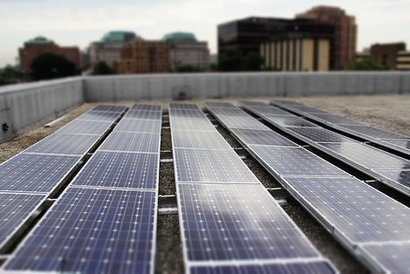
The statistics show a very slight increase in deployment in the smallest solar PV systems, generally located on domestic homes (0-10 kW), triggering a small 3.5 percent reduction (degression) in the tariffs. The 0-4 kW tariff will now be reduced from 12.92p to 12.60p from 1st October 2015.
There has been an automatic 3.5 percent reduction in the tariff for slightly larger systems on schools, leisure centres and other similar sized buildings (10-50 kW). However, there has been very little deployment. The FiT for this category will be reduced from 11.71p to 11.42p from 1st October 2015.
Similarly, there has been very little deployment for large commercial solar roofs. The tariff for this category has not been reduced, but the tariff for smaller ground-mounted solar farms has been reduced by 3.5 percent.
“As tariffs gradually come down a 3.5 percent reduction makes less and less of a difference to the actual tariffs” said David Pickup, Business Analyst at the Solar Trade Association. “And as costs come down, along with tariffs, solar can provide more and more value for money green power. However what is clear is that commercial rooftop solar is not the success story we and the Government had hoped. In our Solar Independence Plan, we recommend a number of ways to remove barriers to commercial deployment, including changes to the way the Feed-in Tariff is designed as well as to regulatory and administrative systems. It is vital that these are addressed by Government.”
Mr Pickup added that in order to try and simplify this part of the market for businesses, the STA has published a Commercial Rooftop Solar Confidence Checklist - a non-technical checklist that any business that has a big roofspace can use to guide them through the process of going solar and bringing down their energy bills.
The cost of solar has fallen by about 70 percent over the last five years. Modelling by the Solar Trade Association published last month has shown that it could now only cost £1.70 extra on annual household bills to deliver over a million more solar homes and subsidy-free solar in 2020 with the domestic Feed-in Tariff.
The government recently announced it would be closing support for large rooftop solar and ground mounted solar farms currently available under the Renewables Obligation (RO), which will be closed as from 1st April 2016. There will also be planned reductions for solar projects already in the pipeline. The RO currently supports solar projects between 50 kW and 5 MW in size.
According to Leonie Greene, the chair of the STA, this will be very damaging to both large solar rooftops and ground-mounted solar farms. The government has claimed that it wants to shift emphasis to larger solar rooftops, but the STA has constantly advised that this segment only accounts for 5 percent of the UK solar market and more work is needed to unlock solar rooftops. Solar farms are also very close to being competitive with new gas generation and account for a very small expenditure on the RO, which currently imposes a maximum of £3 on UK household energy bills.
The government’s proposals also include changes to the rules on Feed-in Tariffs which support small solar rooftops and solar farms. The government is proposing to remove ‘pre-accreditation’ to a fixed level tariff, meaning that complex community and commercial projects that can take longer to complete could have to deal with reducing tariff levels between the start and finish of the project. This will make it harder to develop both commercial rooftop and community solar projects. However, this is not an issue for residential or domestic solar on people’s homes which are quick to install and do not depend on pre-accreditation.
For additional information:

